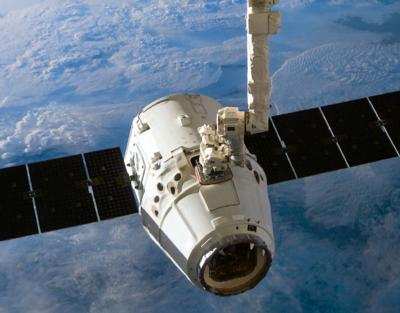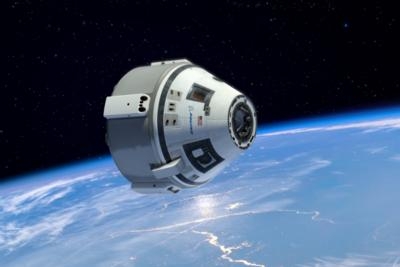NASA Down-Selects Spacecraft For The “Commercial Crew” Program
By Wes Oleszewski, ANN Spaceflight Analyst
Just after 4:00 pm Eastern Time, NASA Administrator Charlie Bolden announced the agency’s choice of vehicle designs for the Commercial Crew Transportation Capability (CCtCap) program. This is the effort to once again get US astronauts to the International Space Station (ISS) by using US boosters and spacecraft launched from US soil. The choices were Boeing’s CST-100 and SpaceX’s Dragon.

With the end of the Space Shuttle program, NASA was left with no way to get its crewmembers to and from the ISS, or to get critical ISS experiments back to Earth. Originally, the Constellation Program’s Ares I launch vehicle and its Orion spacecraft were slated to taxi crews to and from the ISS, but shortfalls in funding from the Bush administration delayed the proposed launch of those vehicles until 2015. That left NASA with a four year gap in its ability to launch crews. The solution was to depend on the Russian Soyuz for all crew transportation. Then, in February of 2010, when the Obama administration cancelled Constellation and the Ares I and Orion, the US dependency on Soyuz became indefinitely protracted.
It was also the decision of the Obama administration that all future US manned launches would now be done by private “commercial” contractors. A number of companies, many being newly formed up-starts, came forward to attempt to gain the contract to design and build the spacecraft. NASA and the Obama administration contended that these commercial operators could do the job cheaper and faster than could NASA itself. Setting up a series of milestones for each competing contractor to meet, NASA systematically reduced the number of serious competitors by way of down-selects. The final three companies were Sierra Nevada, with their Dream Chaser space plane, Boeing, with their CST-100 space capsule and SpaceX with their Dragon space capsule. On September 16, 2014 NASA announced the results of the final down-select; CST-100 and Dragon.
A fixed-price contract goes to each of the two selected companies for their continued CCtCap efforts. Boeing is awarded $4.2 billion dollars and SpaceX is awarded $2.6 billion dollars. The goal now is to end the reliance on Russia’s Soyuz by 2017. Each company will have to demonstrate the ability of their vehicles to fly crews to the ISS and return them with a level of safety determined by NASA. Test flights both unmanned and manned will be required before NASA commits its astronauts to flying aboard either vehicle. The CST-100 is slated to launch atop an Atlas V booster and the Dragon is slated to launch atop a SpaceX Falcon 9 launch vehicle.

A few EDITORIAL words here:
I have serious doubts that SpaceX will be able to meet the 2017 goal with its Dragon Version 2 spacecraft. If they had moved forward with a manned version of their Dragon Version 1, I would be saying that they will be able to fly to the ISS next year because it is a flight tested and reliable vehicle. The proposed Dragon V.2, however, is far from being manned-flight-worthy anytime soon. It has never flown, and its rocket-powered recovery system is something that no one has ever attempted with an Earth orbital vehicle. Additionally, both pad abort and launch abort systems on the Dragon V.2 have yet to be tested. Boeing’s CST-100, although also never flown, recovers by way of parachutes and its abort system has been tested in the pad abort mode. Additionally, SpaceX’s Falcon 9 booster is currently suffering from a number of problems common to a new type of launcher. The Atlas V, however, has a long track record of highly successful launches. Although some may attempt to argue that its use of
Russian RD-180 engines may make it vulnerable to delays should the Russians decide to stop shipping them, there are enough engines on hand to meet the 2017 goal. My personal feeling is that Boeing may beat SpaceX to the ISS with a crew- which is difficult for me considering that I am a SpaceX fan.
(Images from file. Top: Unmanned SpaceX Dragon at ISS. Bottom: Artist's rendering of Boeing CST-100 in flight)
 ANN's Daily Aero-Term (05.07.25): Terminal Radar Service Area
ANN's Daily Aero-Term (05.07.25): Terminal Radar Service Area ANN's Daily Aero-Linx (05.07.25)
ANN's Daily Aero-Linx (05.07.25) Classic Aero-TV: Anousheh Ansari -- The Woman Behind The Prize
Classic Aero-TV: Anousheh Ansari -- The Woman Behind The Prize NTSB Prelim: Bell 206B
NTSB Prelim: Bell 206B Airborne-NextGen 05.06.25: AF Uncrewed Fighters, Drones v Planes, Joby Crew Test
Airborne-NextGen 05.06.25: AF Uncrewed Fighters, Drones v Planes, Joby Crew Test




